York Minster
History
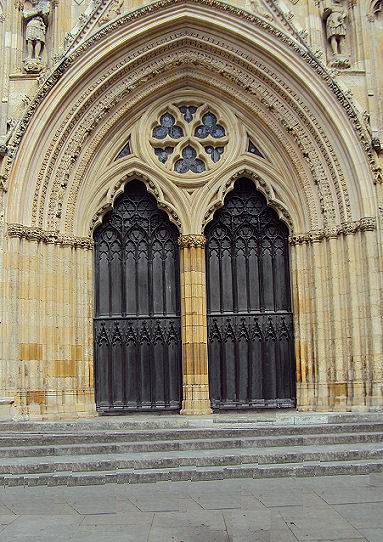 York Minster is the largest gothic cathedral in northern Europe, considered to be the jewel in York's crown, it is a masterpiece in stone and stained glass with its foundations rooted in the early history of the nation.
York Minster is the largest gothic cathedral in northern Europe, considered to be the jewel in York's crown, it is a masterpiece in stone and stained glass with its foundations rooted in the early history of the nation.
The Minster is built on remains of the Basilica, the ceremonial centre of the Roman fortress at York, the central tower of the minster was built over one corner of the principia. The foundations of the Basilica are visible today in York Minster's Undercroft, Treasury and Crypt. The word 'minster' is an Anglo-Saxon term attributed to missionary teaching churches.
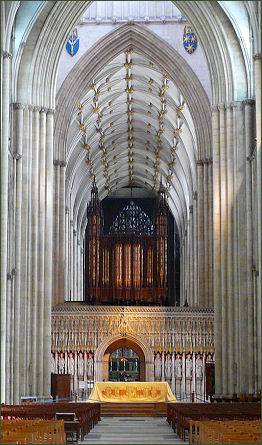 The first church to occupy the site of the minster was a wooden structure built in 627. Ethelburga (born 605), daughter of King Æthelberht of Kent travelled north accompanied by Bishop Paulinus to marry king Edwin of Northumbria. Ethelburga was a Christian, who converted her husband, Edwin was accordingly baptised by Paulinus in the church especially constructed for the occasion. Their marriage triggered the initial phase of the conversion of the pagan north of England to Christianity.
The first church to occupy the site of the minster was a wooden structure built in 627. Ethelburga (born 605), daughter of King Æthelberht of Kent travelled north accompanied by Bishop Paulinus to marry king Edwin of Northumbria. Ethelburga was a Christian, who converted her husband, Edwin was accordingly baptised by Paulinus in the church especially constructed for the occasion. Their marriage triggered the initial phase of the conversion of the pagan north of England to Christianity.
A few years later, the church was rebuilt in stone by King Edwin and dedicated to St. Peter. Before the building could be completed he was killed fighting Penda of Mercia and Cadwallon ap Cadfan at the Battle of Hatfield near Doncaster in 633. It was eventually completed by his successor, King Oswald, in 641, the very year that he too was killed in battle. After his death, Ethelburga, along with Bishop Paulinus, returned to Kent
In 741 Edwin's church was destroyed in a disastrous fire but was again rebuilt as a more impressive structure containing thirty altars by St. Wilfrid. The scholar, Alcuin, described the church as having strong foundations, a vaulted roof and some 30 altars. Egbert (732-766), the first recogised Archbishop of York, established the attached school and library in the eighth century.
Over the proceeding centuries during the Viking invasions, York was controlled by the Vikings and Anglo-Saxons in turns as the Viking kingdom of Jorvik rose and fell, the Danish king, Guthfrith, converted to Christianity and was buried in the Minster in 895.
Ealdred the Anglo-Saxon Archbishop of York, who had previously been an advisor to King Edward the Confessor, crowned William the Conqueror in Westminster Abbey on Christmas Day 1066 following his victory over King Harold at Hastings. At Whitsun 1068 he performed the coronation of Matilda, William's wife, he appears to have been one of the few native Englishmen who William trusted. However, there was much resistance to the Norman William's rule in York and he came north in 1069, destroying much of the city, and badly damaged the minster.
Ealdred died on 11 September, 1069 and was buried in the Minster, just a few days later the church was badly damaged in a struggle between the Danes, Normans, and Saxons.
Edgar Atheling, the Saxon claimant to the throne, joined forces with King Sweyn of Denmark in 1069. The Danish king wished to avenge the death of his cousin King Harold at Hastings, he brought a large fleet to England and attacked not only York, but Exeter and Shrewsbury. York was taken by the combined forces of Edgar and Sweyn. As a result, the city of York was sacked and churches including the Minster were plundered. Both York and the Minster suffered greatly during William's "Harrying of the North", carried out in response to the Saxon revolt. To compound this a Danish invasion destroyed the church completely in 1075.
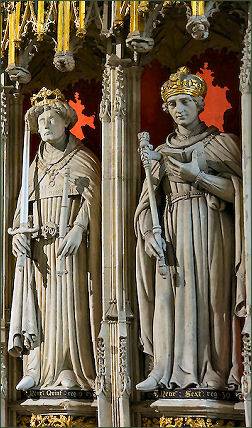 Following the death of the Saxon Archbishop Ealdred,
a Norman, Thomas of Bayeux (died 18 November 1100), was appointed to the post of Archbishop of York. He was educated at Liège and became a royal chaplain William I when he was Duke of Normandy. After Thomas' election as Archbishop, Lanfranc, Archbishop of Canterbury, demanded an oath of obedience from him and any future Archbishops of York; this was part of Lanfranc's claim that Canterbury was the primary bishopric, and its holder the head of the English Church. Thomas countered that York had never made such an oath. As a result, Lanfranc refused to consecrate him. The King eventually persuaded Thomas to submit, but Thomas and Lanfranc continued to clash over ecclesiastical issues, including the primacy of Canterbury, which dioceses belonged to the province of York, and the question of how York's obedience to Canterbury would be expressed.
Following the death of the Saxon Archbishop Ealdred,
a Norman, Thomas of Bayeux (died 18 November 1100), was appointed to the post of Archbishop of York. He was educated at Liège and became a royal chaplain William I when he was Duke of Normandy. After Thomas' election as Archbishop, Lanfranc, Archbishop of Canterbury, demanded an oath of obedience from him and any future Archbishops of York; this was part of Lanfranc's claim that Canterbury was the primary bishopric, and its holder the head of the English Church. Thomas countered that York had never made such an oath. As a result, Lanfranc refused to consecrate him. The King eventually persuaded Thomas to submit, but Thomas and Lanfranc continued to clash over ecclesiastical issues, including the primacy of Canterbury, which dioceses belonged to the province of York, and the question of how York's obedience to Canterbury would be expressed.
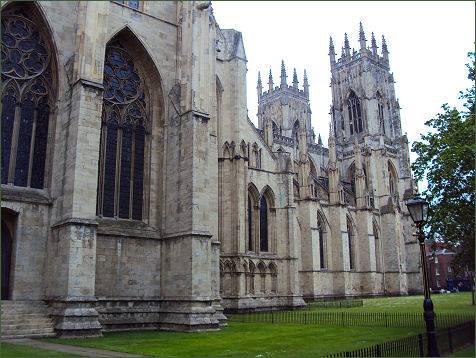 Thomas rebuilt the Minster beginning in 1080. Fragments of Thomas's cathedral remain,
including a carved capital which is a copy of one from a Bayeux cathedral. Sections of the first Norman Cathedral can be seen in the Minster undercroft.
Thomas rebuilt the Minster beginning in 1080. Fragments of Thomas's cathedral remain,
including a carved capital which is a copy of one from a Bayeux cathedral. Sections of the first Norman Cathedral can be seen in the Minster undercroft.
In 1137 the whole city was burned down due to a fire started by accident and this badly damaged the minster and other churches. The damage was subsequently made good under the direction of Thomas's successor, Roger of Pont L'Eveque. The choir and crypt were rebuilt from 1154, and a large chapel dedicated to St. Sepulchre was added to the nave.
The Gothic style in cathedrals arrived in the mid twelfth century. Walter de Gray was appointed as archbishop in 1215 and ordered the construction of a Gothic structure to compare to Canterbury Cathedral, work began in 1220. The north and south transepts were the first new structures, completed in the 1250s, both were built in the Early English Gothic style but had markedly different wall elevations. A substantial central tower was also completed, with a wooden spire. Building continued into the fifteenth century.
The Building
The Chapter House was begun in the 1260's and was completed before 1296. The wide nave was constructed from the 1280s on the Norman foundations. The outer roof was completed in the 1330s, but the vaulting was not finished until 1360. Construction then moved on to the eastern arm and chapels, with the last Norman structure, the choir, being demolished in the 1390s. Work here finished around 1405. In 1407 the central tower collapsed; the piers were then reinforced, and a new tower was built from 1420. The western towers were added between 1433 and 1472. The cathedral was declared complete and consecrated in 1472.
The building has a cruciform plan with an octagonal chapter house attached to the north transept, a central tower and two towers at the west front. The Minster measures 173 yards (158 metres) long and the central tower has a height of 230 feet (70 metres). The north and south transepts, the first parts of the present church to be constructed have simple lancet windows, including the Five Sisters in the north transept. The glass in the Rose Window in the south transept dates from around 1500 and commemorates the union of the houses of York and Lancaster brought about by the marriage of the first Tudor king Henry VII and Elizabeth of York, daughter of Edward IV..
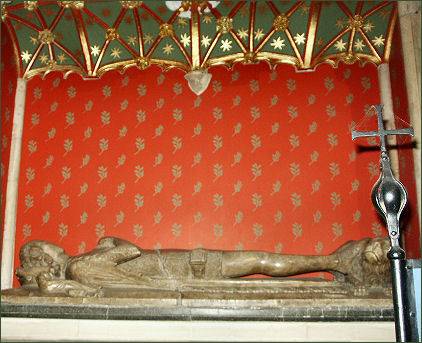 The octagonal chapter house is in the early Decorated style where geometric patterns were used in
the tracery of the windows. The windows cover almost all of the upper wall space, filling the chapter house with light. The chapter house has many sculptured heads above the canopies, representing some of the finest Gothic sculpture in the country.
The octagonal chapter house is in the early Decorated style where geometric patterns were used in
the tracery of the windows. The windows cover almost all of the upper wall space, filling the chapter house with light. The chapter house has many sculptured heads above the canopies, representing some of the finest Gothic sculpture in the country.
The nave was built between 1291 and circa 1350 and is decorated Gothic style. At its west end is the Great West Window, known as the 'Heart of Yorkshire' which features flowing tracery of the later decorated gothic period.
The east end of the Minster was built between 1361 and 1405 in the Perpendicular style. The Central Tower was built between 1407 and 1472 and is also Perpendicular. Below this, separating the choir from the crossing and nave is the unusual fifteenth century choir screen. (pictured above left) It contains statues of the kings of England from William the Conqueror to Henry VI with stone and gilded canopies set against a red background.
Above the screen is the organ, which dates from 1859, in 1903, J.W. Walker and Sons built a new instrument in the same case. They retained several registers from the previous instrument. The Quire is where the cathedra, or throne of the Archbishop of York, is situated, the intricately carved Quire stalls are magnificent. The astronomical clock was installed in the North Transept of the Minster in 1955. The clock is a memorial to the airmen operating from bases in Yorkshire, County Durham and Northumberland who were killed in action during the Second World War.
Among those buried in the minster are Bosa of York, a Bishop of York and Saint (died circa 705), Osbald, King of Northumbria (died 799), Guthfrith, King of Jorvik (died 895) Thomas of Bayeux, Archbishop of York (1070-1100) and William of Hatfield (tomb pictured right) an infant son of Edward III and Phillipa of Hainault who was born in 1336 and died the following year, although the effigy represents a child of about 8.
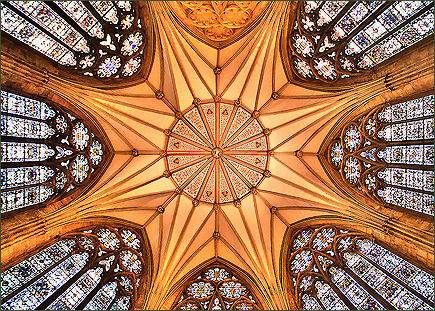
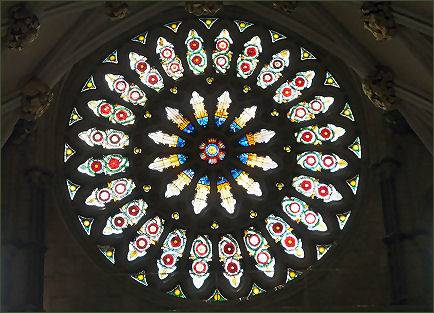
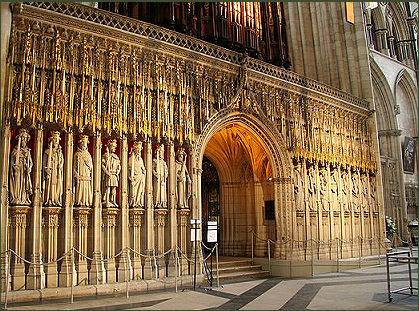
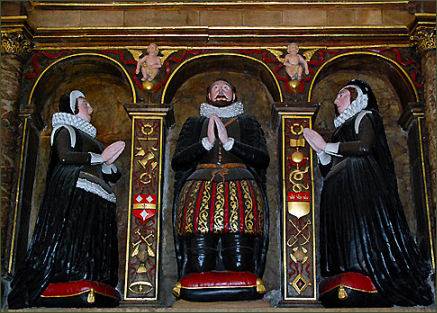
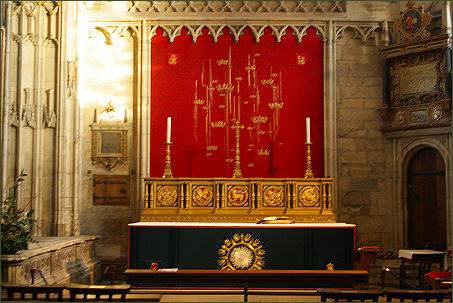

The conversion of York Minster Undercroft is a five-year project, supported by the Heritage Lottery Fund which transformed the Undercroft and Treasury into a series of dynamic new interactive galleries and exhibitions It is the largest restoration and conservation project of its kind in Britain. Visitors will see new displays of historic collections and stained glass plus interactive interpretations.
Churches of York
Abbeys and Churches of Yorkshire
